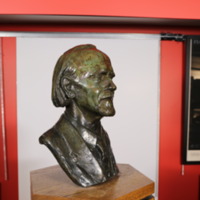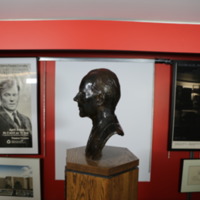History of the Artist
Pál Pátzay (1896-1979) was one of Hungary’s most celebrated and prolific artists, completing mostly sculptures and bronze casts of prominent figures in Hungarian and European history. However, Pátzay was not only an artist. He was also well-known for his political activism in Hungary during the interwar period and Second World War. From 1920-1946, Hungary was led by a fascist regime that aided Nazi forces in the persecution of Jewish citizens during the Second World War. Pátzay was violently opposed to such persecution of Jewish Hungarians and, as such, protested against the regime by aiding Jewish Hungarians in fleeing the country (Various authors 1997). He was even imprisoned during this time for helping persecuted Hungarians flee the country and supporting the budding socialist movement in Hungary (Various authors 1997). Following the end of the Second World War, Pátzay was freed from prison and completed a sculpture to memorialize the Hungarian war-hero Raoul Wallenberg’s fight against Nazism during the Second World War (Various authors 1997).
Pátzay was a strong supporter of Socialism and believed Hungary should be led under a Socialist government. It is of no surprise, then, that Pátzay would become one of the most prolific state-funded artists under the newly formed Communist regime in Hungary following World War II. His support of the Hungarian Communist Party was confirmed when he was appointed the Hungarian Minister of Culture under the Hungarian Communist Party in 1945 (Various authors 1997). During this time, Pátzay completed many official sculptures for the regime, including one of Joseph Stalin, who the Hungarian Communist Party was politically aligned with (Various authors 1997).
When considering whether or not Pátzay’s artwork should be displayed and celebrated due to his political affiliations, it is important to remember that it was nearly impossible for artists to make a living off of art that was not state-funded, or at least state-accepted, in Communist Hungary. Pátzay’s position as a state-funded artist, solidified by his outspoken support of and position within the Hungarian Communist Party, not only made it possible for him to thrive as an artist, but allowed him some creative liberties he otherwise would not have been allowed. Framing Pátzay’s artistic career in this lens is not in an effort to excuse the actions of the Hungarian Communist Party, but rather to frame his career in terms of the difficulties faced by artists living under Soviet influence.



